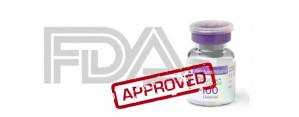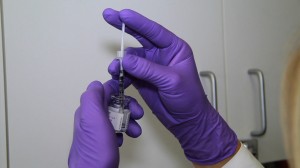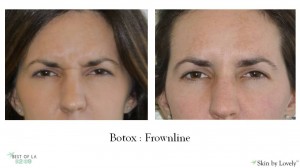Camas, WA
Injectables
Skin Rejuvenation
Hair Restoration & Growth
Shop By Category
Although it has been used both cosmetically and medically for many years, Botox has something of a mixed reputation; some people adore it while others remain doubtful about its use. Given that it is actually a toxin — botulinum type A — it’s certainly wise to learn all you can about the product. Look through the following Botox Cosmetic FAQ to help you understand more about Botox, its uses and what to consider when looking for treatment.
 There is a lot of misinformation about the toxin that makes Botox an effective treatment for facial wrinkles. Alarmist headlines may grab attention, but they don’t tell the whole story. The basic answer is yes, it’s safe when used properly.
There is a lot of misinformation about the toxin that makes Botox an effective treatment for facial wrinkles. Alarmist headlines may grab attention, but they don’t tell the whole story. The basic answer is yes, it’s safe when used properly.
Researchers at Harvard University’s medical school have identified seven different botulinum toxin types, and some are definitely not safe to use. However, type A, the type used for cosmetic treatments, has been approved by the U.S. Food and Drug Administration (FDA) and is considered safe.
Part of the confusion involves the dosages used in studies compared to dosages used for medical or especially cosmetic treatments. The amounts and concentrations vary considerably, and it only makes sense that the effects would be different as well.
One main concern about the toxin is that it will travel to untreated areas, including the brain, and cause symptoms of botulism. In cosmetic treatment, this concern is essentially unfounded.
In one widely reported study, researchers found that the toxin did travel to the brains of injected rats. What wasn’t reported as clearly was that the researchers used extreme doses, including up to 10 times the amount that would ever be used for human treatment. A representative from Allergan, the maker of Botox, also stated that the toxin used in the study was not the same formula used in Botox and pointed out that different preparations and uses won’t create equivalent results.
Medical treatments with Botox, including for children, are different from cosmetic treatments as well. The doses for medical conditions are still considerably higher than concentrations used for cosmetic treatments, and this has been a problem for some children. For instance, some kids who received Botox for cerebral palsy had trouble breathing and swallowing due to the toxin traveling from the injection site. Evidence points to the higher doses used in medical treatment as one of the main problems. Additionally, using Botox for cerebral palsy is considered “off-label” treatment, something that the FDA has not specifically approved, and Botox is not approved for children under the age of 12.
As for cosmetic treatments, the doses used to reduce facial wrinkles are very small compared to either clinical studies or medical treatments. This reduces the chance of serious side effects and also reduces the possibility of the toxin migrating to other body areas. It’s not impossible for a Botox injection to spread, but it’s very rare.
Still, under certain conditions, there is some potential benefit to cosmetic formulas spreading at least a little bit. For example, Dysport, another botulinum type A treatment, has smaller molecules in a more diluted solution than Botox has, and Dysport does spread over a wider area. This is beneficial when treating larger areas like forehead wrinkles since results can be achieved with fewer injections. A third type-A product, Xeomin, differs from the others in that it contains no additives and so may be less likely to generate antibodies that reduce treatment benefits; otherwise, it behaves similarly to Botox.
Some reported information does recommend that you receive no more than 400 Botox units within a three-month time period. You’ll also likely need smaller doses for repeat treatments because the muscles acclimate over time. Additionally, people with neuromuscular diseases, such as ALS, and women who are pregnant or chestfeeding should not receive Botox.
After years of use and millions of procedures, botulinum toxin type A is considered safe for cosmetic treatments. Botox side effects are generally mild and temporary, and serious reactions are very rare, especially with low-dose treatments administered by a certified injection specialist.
 It’s hard to say whether there will ever be an effective Botox cream, but there isn’t one right now. Many creams claim to work as well as Botox or claim that they’re better alternatives, but they’re really not as effective. The problem lies in the delivery method.
It’s hard to say whether there will ever be an effective Botox cream, but there isn’t one right now. Many creams claim to work as well as Botox or claim that they’re better alternatives, but they’re really not as effective. The problem lies in the delivery method.
A Botox injection goes right to the source. Your certified injection specialist knows how to deliver the product directly into the appropriate muscle for the greatest benefit. With a cream, the delivery is much more random. You can certainly rub it into the specific area, but there’s no guarantee that it will penetrate down into the muscle tissue and control the contractions that create wrinkles, which is what Botox does. Additionally, without knowledge of your muscular anatomy, you might end up affecting areas you don’t really want to treat, not to mention that the product will also get on your hands as you apply the cream. It’s not a well-controlled situation.
People who regularly use Botox-like creams often do see some kind of results, but they report that it takes quite a long time. Furthermore, the results may simply be due to improved skin hydration rather than the effects of Botox. Currently, scientific study does not support the effectiveness of topical Botox creams. Injections are safer, better controlled and far more effective.
A dollar figure doesn’t tell you why Botox injections cost what they do, and you have every right to know what you’re receiving for your money. In addition to the formula itself, the cost of Botox includes the experience of your certified injection specialist. It takes skill to inject Botox properly and to treat you safely while minimizing side effects. The services of a skilled specialist are essential; you don’t want someone who just set up shop as a quick money-making scheme. You should feel free to ask your injection specialist about his or her specific experience and training. If you’re not comfortable, don’t continue the treatment.
Another element of your Botox cost is whether you’re paying by the unit or by the treatment area. This can make a big difference in the price, so be sure to ask. One isn’t necessarily better than the other; it just depends on the provider. Highly skilled providers, like those at Skin by Lovely, will always cost a bit more that many of the discount offerings on Groupon and other daily deal sites. Many Botox injectors discount deeply because they HAVE to. As a certified national training center for Botox and Dysport, the clinicans at Skin by Lovely are recognized as some of the top injectors in the United States and are sought after for their expertise by surgeons, dermatologists and other licensed health care providers.
Prices also tend to vary by location. For example, Botox in Portland will likely be a different price than Botox in Santa Monica. Within a given area, the differences between providers may well relate to skill level, training and experience.

No, Botox pictures showing treatment results should never be altered. If you’ve found a reputable provider, pictures won’t be altered because there’s no need to do so. Botox is an effective treatment for facial wrinkles. If someone fakes their results, then they aren’t giving you safe or genuine treatment.
Trying to find the best Botox price really isn’t the best way to choose a provider. In fact, it could be dangerous. You can shop around for Botox in Los Angeles or Google “Best Botox Prices in Portland” and probably find a price that is much lower than most other places, but the phrases “buyer beware” and “getting what you pay for” absolutely apply.
Cheap prices could indicate knockoff or counterfeit products that are both illegal and unsafe. Don’t hesitate to ask your provider where he or she buys Botox. It should always be from an authorized dealer for Allergan, the company that makes the product. If you’re receiving Dysport treatment, the product should come from Galderma while Xeomin comes from Merz Pharmaceuticals. You can also ask to see the bottle itself and the packaging to make sure it’s legitimate. Anything less than genuine Botox could have serious side effects and endanger your health. Cheap prices aren’t worth it.
You also need a skilled and experienced certified injection specialist to administer your Botox, someone who has training and knows how to deliver treatment safely and effectively. It might cost a bit more, but you’ll remain safe.
Experience is more than numbers treated too. Consider Botox parties, which might sound like fun and a good way to share costs. Plus, someone who runs the gatherings has probably given lots of injections. It doesn’t matter. Safe, sanitary practices are harder to follow in this type of setting. The person giving the injections may not have been well trained, and the product might not be from an authorized dealer. Even if the provider and product are legitimate, casual, social settings aren’t ideal because you may be less attentive to warnings and risks.
Bottom line: Look for a reputable, qualified injection specialist at a reputable facility rather than just searching for the lowest Botox price.
 Yes, the FDA has approved Botox for migraines in very specific circumstances. It’s intended to treat patients aged 18 and above who have chronic migraines that last at least four hours a day at least 15 days a month.
Yes, the FDA has approved Botox for migraines in very specific circumstances. It’s intended to treat patients aged 18 and above who have chronic migraines that last at least four hours a day at least 15 days a month.
The FDA doesn’t believe that Botox is useful with fewer headache days or for other types of headaches. If you only have occasional severe headaches or if they’re of short duration, then Botox isn’t a valid treatment. It’s also not meant as an initial treatment. Botox is generally recommended only after two or more medications have failed to improve your condition. At that point, insurance may cover the costs.
Botox migraine treatment consists of 31 injections in seven areas around the head and neck. It usually takes about a week to start feeling the results, and the highest effectiveness occurs about six weeks after the injections. The treatment will fade after approximately three months, but you can repeat it. Note: It’s possible that you won’t experience any results until you’ve had a series of treatments, specifically three treatments at three-month intervals.
Because there can be side effects, as with any Botox treatment, it’s important to discuss with your provider whether this is the right option for you.
Many people are uncomfortable with injections and naturally wonder about the experience of receiving Botox. Your certified injection specialist will consult with you about the areas you’d like to treat and discuss what Botox can and can’t do. You might have ice or numbing cream applied to the treatment areas to help desensitize them, but Botox is injected with a very small, fine needle that generally causes little discomfort.
Your specialist will ask you to frown, raise your eyebrows or perhaps smile or squint to clearly show the lines you want to treat. Once you relax your muscles again, the specialist may gently grasp or press underneath the area for optimum access before injecting the Botox. You’ll likely receive a series of small injections per area, each lasting only a few seconds. You might also feel a slight burning sensation as the fluid enters the muscle.
There’s no down or recovery time, but avoiding alcohol and exercise for a few hours will help keep bruising and swelling to a minimum. Also avoid massaging or rubbing the treated areas to prevent migration of the formula to other areas; you can use cold compresses if needed for comfort. You’ll see results in about a week, and treatment should last about three months.
Receiving Botox is a very straightforward procedure that doesn’t take a lot of time, but once again, that doesn’t mean that anyone can do it. You should only receive treatment from an experienced certified injection specialist.
For more information about Botox or to schedule a consultation with one of our certified injection specialists, contact us in our facial aesthetics clinics in Portland, OR or Santa Monica, CA today!